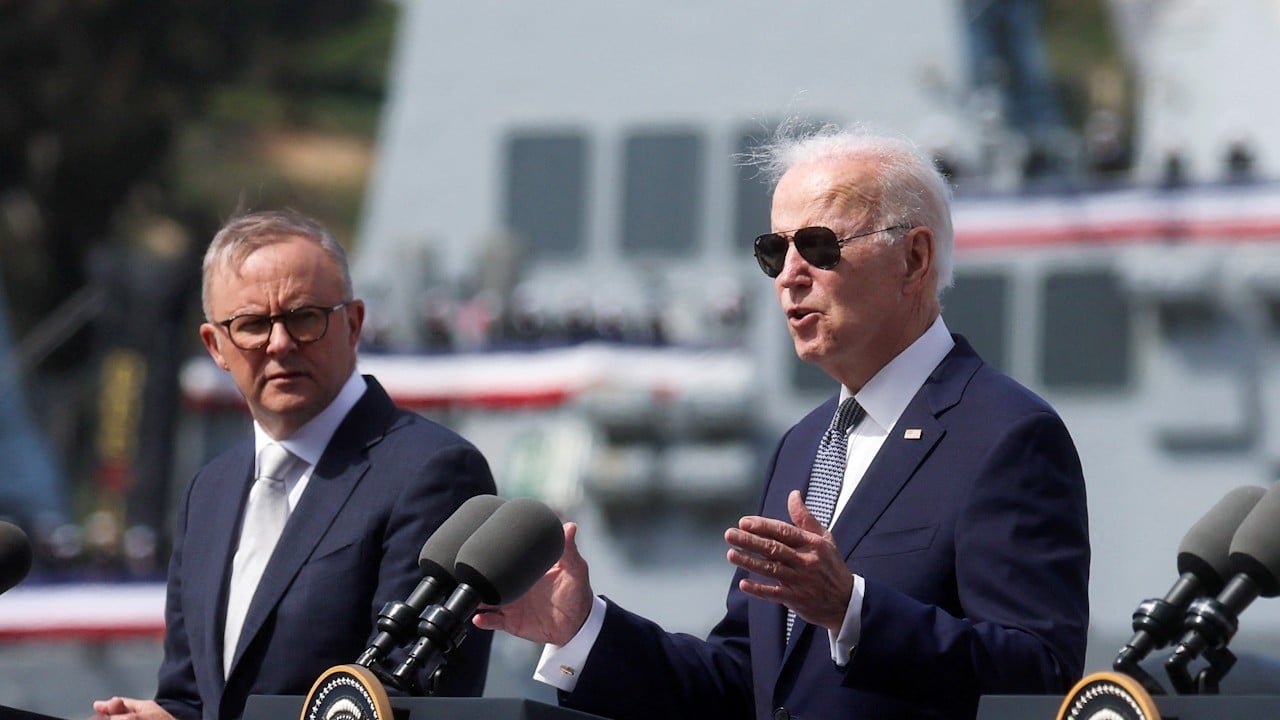
Why Australia’s Aukus submarine deal is a clear threat to nuclear non-proliferation
- The way the submarine deal is structured sets a bad precedent of supplying a non-nuclear weapon state and NPT member with weapons-grade fuel
- If the Aukus partners want to set good standards for non-proliferation, they should expand IAEA safeguards or abandon using nuclear submarine technology
First, the supply of a conventionally armed nuclear submarine to a non-nuclear weapon state and member of the Treaty on the Non-Proliferation of Nuclear Weapons (NPT) is not only unprecedented but threatens the international non-proliferation regime.
Second, the trilateral deal could deepen geopolitical tensions in the region, setting the Australian navy against Chinese maritime forces in ways that would increase the nuclearisation of the Indian Ocean region and could violate Australia’s own pledge of a nuclear weapons-free zone.
The Aukus partners have said their trilateral partnership to provide Australia with a conventionally armed nuclear submarine would set “the highest possible non-proliferation standards” in ways that “strengthen the global non-proliferation regime”. To ensure this, the US and the UK would provide Australia with complete, welded power units, from which “removal or diversion of any nuclear material would be extremely difficult”.
Additionally, the nuclear material would not be in a form to produce nuclear weapons directly and instead would need further processing in nuclear facilities that Canberra does not have.
On top of that, Australia has been negotiating with the International Atomic Energy Agency (IAEA) to develop a “suitable verification arrangement” against the diversion of nuclear fuel.
But nuclear experts have warned that instead of the highest possible non-proliferation standard, the US was on its way to setting a bad precedent of supplying a non-nuclear weapon state and a member of the NPT with weapons-grade fuel. The nuclear material could remain outside IAEA safeguards for as long as the nuclear submarine remains on patrol.
During that period, it would be impossible for the IAEA to ensure the nuclear material is not removed or diverted for military applications. Some members of the IAEA such as China and Indonesia have argued that the Aukus partners have been less transparent and kept their negotiations with the IAEA private.
Another problem is that the IAEA is bound by its statutory obligations to ensure its assistance “is not used in such a way as to further any military purpose”, but the definition of “non-proscribed military activity” or “non-peaceful activities” is unclear. The Aukus partners cannot themselves assume the connotations of these terms and privately negotiate the application of safeguards without the input of other interested IAEA members.
What to know about Australia’s Aukus subs and why it’s causing anxiety in Asia
These plans appear to show that Australia could provide US forces with a “protective screen” to attack Chinese targets in the event of conflict and reinforce the US Navy’s strategy to deter Chinese nuclear capability in the region.
For a non-nuclear weapon state and member of the NPT, acquiring or developing an armed nuclear submarine is not the right way to go about doing that. China is not the only country with nuclear submarine capability in the Indo-Pacific. The US and India also operate submarines in the region.

While China and the US are NPT member states and nuclear powers, India is a non-NPT state. This would be the first time a non-nuclear weapon state and a member of the NPT would operate a nuclear submarine utilising what have been called “grey areas” around IAEA safeguards.
Australia faces tough task soothing Asia anxieties over Aukus subs: analysts
If the Aukus partners want to set the best standards for the global non-proliferation regime, they would be better served to extend the IAEA safeguards to any submarines on patrol to ensure that the agency’s oversight does not stray from the nuclear material at any point. Alternatively, they could shelve the nuclear submarine technology and explore other options with similar military capabilities and features.
The IAEA would also have to address these issues and ensure the transparency and participation of all member states in these negotiations.
The concerned member states would do well to provide solutions to these problems in general terms, not just those specific to Australia, and sideline geopolitics to set a uniform, non-discriminatory criteria for all non-nuclear weapon states and members of the NPT.
Riaz Khokhar is a research associate at the Center for International Strategic Studies (CISS) and a former Asia Studies visiting fellow at the East-West Centre in Washington


